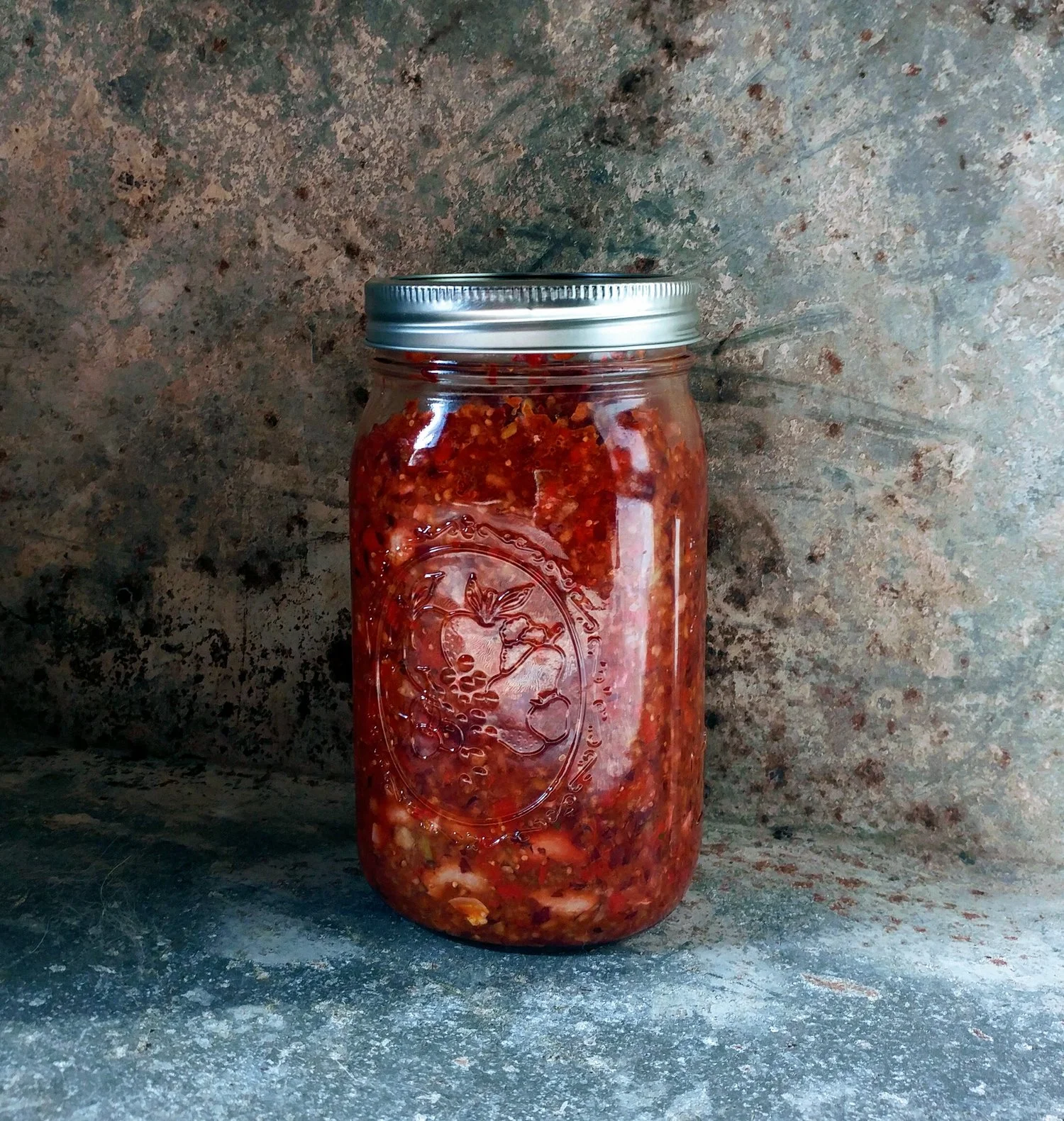One of my biggest regrets during work travel is the lack of ferments in my diet. I’ve become so used to including something tangy and soured at every meal that without the funky flavor, food tastes bland and underwhelming. Not to mention the loss of healthy microbes that my gut has to deal with.
On one memorable trip I came up with a plan. I had been packing a large jar of purple cabbage for kraut the night before departure when I thought: why not pack a small jar for my checked bag and let it ferment on the journey? By my calculations, between the added whey and the temperature I expected during my travel, I would have a lightly soured kraut within two days.
It was a desperate act but, surprisingly, it worked. The kraut was slightly crunchy, delightfully tangy, and a total game changer for my morning hotel eggs. My microbiome was thrilled.
But I had neglected an important precaution. The double bag. Pressure from the fermenting purple cabbage caused some of the vibrant juice to leak out, decorating my light gray jeans that had cushioned the jar with a purple splash down one thigh. Being a light packer, I had no choice but to wear them anyway. I didn't try to explain.
Take home lesson: pack light-colored ferments for travel.
Until relatively recently, when refrigeration stepped in and simplified our worlds and before canning put our foods in suspended animation, we relied on ferments to preserve nearly everything. Vegetables, fruits, meats, dairy, and grains all have traditional methods of preservation, unique to each corner of the globe, that rely on a combination of time and microbes. The resulting product has a depth of flavor and an array of health benefits not found in the original food. If milk is a construction worker on Team Bone Building, milk fermented into yogurt or kefir is a straight up superhero, slaying digestive issues in its path while providing more absorbable nutrients. Similarly, many individuals who struggle with gluten and grains find that artisan sourdough breads, relying on slow fermentation for their rise, are digested without complaint from their gut.
As you may have guessed, I’m a ferment junkie. It’s my go-to condiment and topping for everything. It’s the “secret ingredient” in my tuna salad and the complex flavor behind our weekly sourdough pancakes. Over the years I’ve established a few favorites that are nearly pets at this point; my jun SCOBY, the sourdough starter, and kefir grains, to name a few. But the fruits and vegetables that come and go from the ferment corner of my kitchen are the flashy stars at the table. We get ridiculously excited for an extra good batch of turmeric ginger sauerkraut or for the perfect heat of a fermented pepper relish.
The latest creation is a true show stopper. A recent trip to the farmers’ market left me with a few pounds of local, organic cranberries. With Thanksgiving around the corner, I decided to try a fermented cranberry chutney. Canned chutney was my first foray into food preservation and I have a special place in my heart for the way the sweet and savory flavors play off each other in each bite.
If you’re new to the ferment world and hesitant about leaving fresh things to age on the counter-top, fear not. This ferment not only has a short and sweet culturing time, but also a variety of ingredients to mask the more intense flavors that some soured creations provide. It’s also incredibly easy to make with a food processor or blender, requiring much less elbow grease than a classic kraut.
Try this sauce with crostini and a soft brie, spooned over roasted fall vegetables, or tossed into a harvest salad.
- 3 cups fresh Cranberries
- 1 lg. Apple, peeled and cored
- 1 cup Goji Berries (substitute raisins or currants)
- 1 lg. Red Onion, peeled and roughly chopped
- 1 lg. stalk Celery, roughly chopped
- 1 Green Pepper, roughly chopped
- ¼ cup Honey
- ¼ cup Apple Cider Vinegar
- ¼ cup Water
- ¼ cup Whey (strain yogurt through cheesecloth for 1-2 hours to separate the whey)
- 2 tsp. Salt
- 1 Tbsp. grated Ginger (may use 1 tsp. powdered)
- 1 Tbsp. grated Turmeric (may use 1 tsp. powdered)
- 1 tsp. Cinnamon
- 1 tsp. Allspice
- 1 cup Cashews
Combine all ingredients except for cashews in a food processor and pulse to desired consistency. I prefer this chutney to have a fine mince but make sure to stop the processor before it’s a puree. Add the cashews for one final pulse, leaving larger nut pieces throughout. Pack the chutney into three pint jars, leaving about a half inch of headspace, and cap loosely. Stir 1-2 times a day for three days. Chutney should show signs of small air bubbles throughout by the end of three days; taste and see if it’s soured to your liking. If not, leave out for another day. If so, move to fridge and enjoy within two months.


